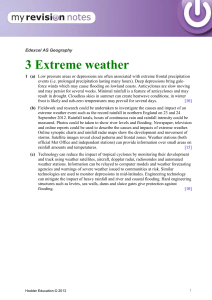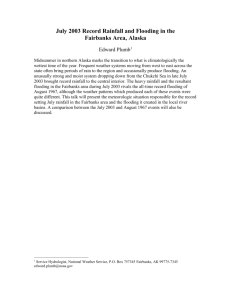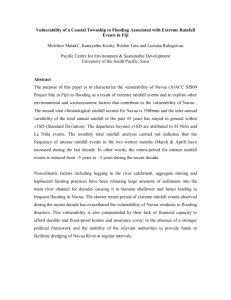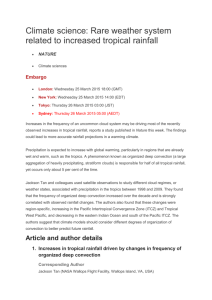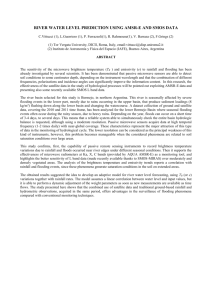MSc thesis proposal
advertisement
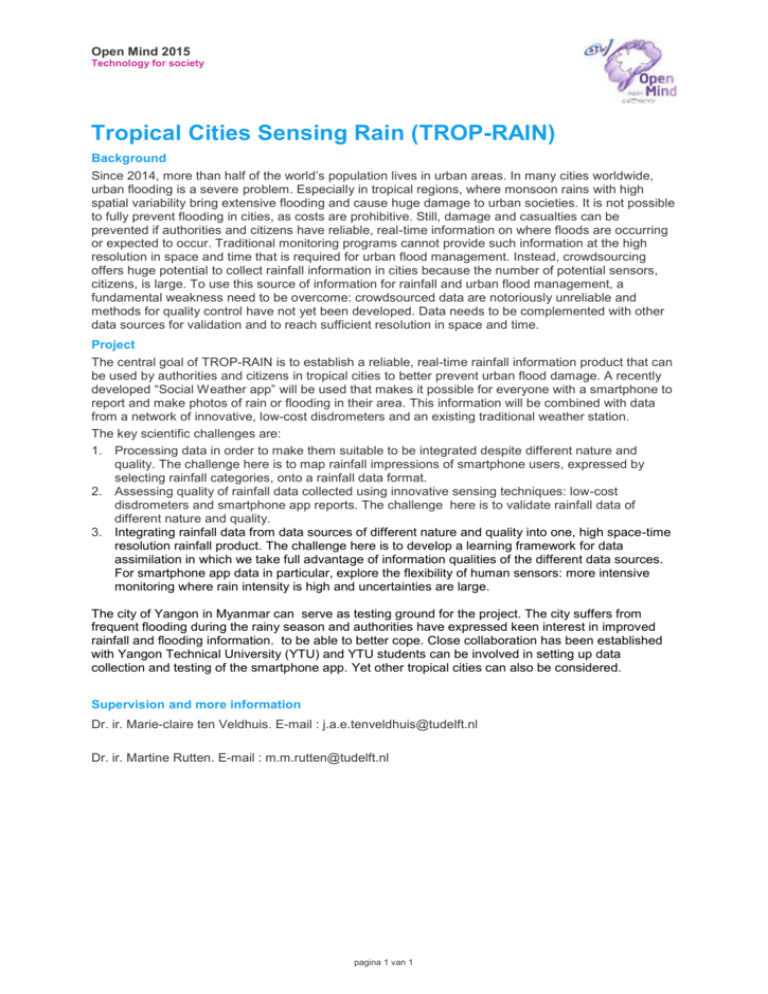
Open Mind 2015 Technology for society Tropical Cities Sensing Rain (TROP-RAIN) Background Since 2014, more than half of the world’s population lives in urban areas. In many cities worldwide, urban flooding is a severe problem. Especially in tropical regions, where monsoon rains with high spatial variability bring extensive flooding and cause huge damage to urban societies. It is not possible to fully prevent flooding in cities, as costs are prohibitive. Still, damage and casualties can be prevented if authorities and citizens have reliable, real-time information on where floods are occurring or expected to occur. Traditional monitoring programs cannot provide such information at the high resolution in space and time that is required for urban flood management. Instead, crowdsourcing offers huge potential to collect rainfall information in cities because the number of potential sensors, citizens, is large. To use this source of information for rainfall and urban flood management, a fundamental weakness need to be overcome: crowdsourced data are notoriously unreliable and methods for quality control have not yet been developed. Data needs to be complemented with other data sources for validation and to reach sufficient resolution in space and time. Project The central goal of TROP-RAIN is to establish a reliable, real-time rainfall information product that can be used by authorities and citizens in tropical cities to better prevent urban flood damage. A recently developed “Social Weather app” will be used that makes it possible for everyone with a smartphone to report and make photos of rain or flooding in their area. This information will be combined with data from a network of innovative, low-cost disdrometers and an existing traditional weather station. The key scientific challenges are: 1. Processing data in order to make them suitable to be integrated despite different nature and quality. The challenge here is to map rainfall impressions of smartphone users, expressed by selecting rainfall categories, onto a rainfall data format. 2. Assessing quality of rainfall data collected using innovative sensing techniques: low-cost disdrometers and smartphone app reports. The challenge here is to validate rainfall data of different nature and quality. 3. Integrating rainfall data from data sources of different nature and quality into one, high space-time resolution rainfall product. The challenge here is to develop a learning framework for data assimilation in which we take full advantage of information qualities of the different data sources. For smartphone app data in particular, explore the flexibility of human sensors: more intensive monitoring where rain intensity is high and uncertainties are large. The city of Yangon in Myanmar can serve as testing ground for the project. The city suffers from frequent flooding during the rainy season and authorities have expressed keen interest in improved rainfall and flooding information. to be able to better cope. Close collaboration has been established with Yangon Technical University (YTU) and YTU students can be involved in setting up data collection and testing of the smartphone app. Yet other tropical cities can also be considered. Supervision and more information Dr. ir. Marie-claire ten Veldhuis. E-mail : j.a.e.tenveldhuis@tudelft.nl Dr. ir. Martine Rutten. E-mail : m.m.rutten@tudelft.nl pagina 1 van 1
